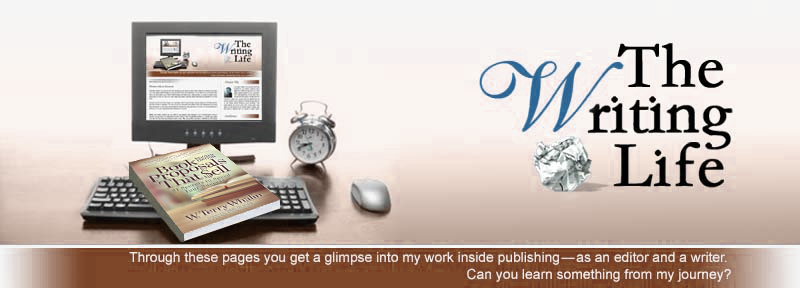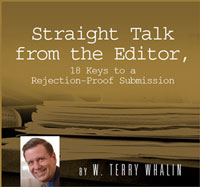Shocking News For Authors
The Book Business Is A Business First
Before I began working inside a book publishing house, I had written more than 50 nonfiction books, ranging from children's to adult books. I have never self-published a book and always worked through traditional publishers.
However, I was unaware of the financial production numbers for nonfiction books and I found it shocking--and something critical for potential authors to understand. The author never sees these figures for their books as the publisher doesn't reveal them throughout the contract negotiation process. A publisher will produce these financial calculations as simply a part of good business practices. As an author, understanding this helped me see publishing as a business. Authors have huge amounts of time and emotional investment in their words. When I saw these production numbers, I understood that the publisher, not the author, has the largest out-of-pocket cash investment in a book.
Inside the publisher, the editor will gather a sales projection about how many copies the sales department believes they can sell of your title the first year. That sales figure will be used to calculate the production costs of ink, paper and binding for various amounts of printing (5,000, 10,000 or 15,000 copies). As the initial print number is raised, the cost per book decreases.
You may ask, So why not print a large volume each time? The answer is, if the publisher prints a large number of copies, then he has to store those copies in their warehouse (read cost and expense), plus make sure they actually sell those copies within a year's time frame. The cost of tying up financial resources in storing and warehousing books that aren't selling is large. Also the federal government taxes publishers on each copy in storage. These tax rules have forced publishers to think long and hard about how many copies of each book to print.
Inside my former publisher, we calculated the overall printing details of the book (paperback with general publishing look or hardcover with jacket) and the number of books to print before offering a book contract. In short, publishers pour a great deal of work into their books and financial projections before they call you and offer a nonfiction book contract. Understanding this process helps you see some of the reasons it takes such a long time for an author to receive a publishing contract.
Often the publisher returns to an author with whom they have already published a book. If the publisher takes a second or third book from the same author, they are investing in that author's career and trying to build that author's audience and market. If the author's books are selling well, then the publisher will be eager for another project. Each week, publishers monitor sales numbers on their books to see if particular authors merit another book contract.
Many writers focus only on the creative aspects of writing a book and getting it published, but the executives inside a publishing house are business people who want to sell books and turn a profit at the end of the day. It's a delicate balance between creating the best possible product and assuring that each product has the best opportunity to sell into the market and reach the target audience.
Editor note: This article is an excerpt from my bestselling book, Book Proposals That $ell, 21 Secrets to Speed Your Success. It has over 130 Five Star Amazon reviews but don't get it from Amazon. Recently I've purchased the remaining copies and cut the retail price from $15 to $8. I've added bonuses and much more. Get it direct from me at: http://BookProposalsThatSell.com Take action today because supplies are limited.
Tweetable:
Get this Shocking News for Authors from an experienced editor (Click to Tweet)

Labels: author, book, book proposals, Book Proposals That Sell, business, editor, selling books























8 Comment:
Someone once asked baseball legend Ty Cobb whether he thought the game of baseball was a business. Cobb replied, “If it isn’t, then Standard Oil is a sport.”
Publishing has always been a business, and all businesses are concerned with bottom line. A publisher may spend more in terms of dollars on getting a manuscript into print, but it’s the author who spends infinitely more in terms of time and opening a vein to bleed on a piece of paper. Only a select few get an advance, and I understand that one well-known author doesn’t even write his own novels anymore.
If a writer had money, he wouldn’t need a publisher. Conversely, if a publisher could write stories, they wouldn’t need writers. Until recently they needed each other, although the publisher has always treated the author as if they didn’t, unless your name was Patterson, or King, or Rowling—any of the few giants who drive profits for the big five.
Today, digital technology enables anyone to see their work in print, whether or not it deserves to be. Rejection letters are a thing of the past. Writers can circumvent learning craft by doing an end around and simply self-publish. Nearly a half-million new titles hit the market in 2014, most self-published titles—poorly written, unedited drivel, making it nearly impossible for the cream to rise to the top.
A few years ago I learned that the new publishing model is simply to upload a first draft and let the consumer tell you what’s wrong with your manuscript; then revise, upload a new draft, and repeat until Random House comes calling. That’s pretty much how E.L. James developed her cash cow. Doesn’t happen often, but it happens often enough to give all hacks hope that they, too, can win the lotto.
Conrad,
Thank you for this lengthy comment. The publishing world continues to change. The answer for each of us as writers is different--and one of the keys is for writers to keep learning about the new ways (like digital), strive for excellence and to be actively looking for their path to their audience. It will not happen overnight for most of us--but if you continually take action and work toward it, you will get there.
Terry
Straight Talk From The Editor, 18 Keys To A Rejection-Proof Submission
Having come from a magazine publishing background, I had already worked out the financial metrics of book publishing ... And find myself surprised at the large quantities of certain titles that a publisher is willing to commit to, particularly in the small Australian market. I have the skill set and access to professionals to self-publish. It is nonetheless a tough road, but having had emails from readers who have borrowed my book via Australian libraries, I feel some pride in my self-publishing efforts (I set up my own imprint) .... The mainstream publishing houses that wouldn't consider my book probably didn't miss a best seller but I think it would have been a modest success for them. I know what it takes to succeed in one small niche of publishing - the magazine I started is no.1 in its sector in Australia and had been profitable for 20+ years. I'm busy trying to translate those skills to a new challenge. Probably my greatest asset is my rational approach. As much as I love the writing, I've no illusions about the difficulties of commercial success. I love to read all the comments and opinions ... And advice.
Mary,
Thank you for this comment and well-done on your efforts in the magazine world and publishing world. Keep it up and if I can ever help you, let me know. I admire your tenacity and persistence.
Terry
Hi Terry,
Why do the big publishing houses still need warehouses if they have access to POD? You would need some, but not nearly as many, no? If a book is selling, easy enough to print them now, right?
I self-published on advice from my editor, Erin Healy, but that doesn't mean I won't try the traditional path in the future. Erin says the publishing world is in upheaval right now
Stephen,
Your understanding about publishing is flawed. The big publishers do more than POD printing but also print offset (volume) because of it lowers the print costs per book and increases the profit for each book.
Erin Healy is a great editor--but self-publishing in my view is a hard way to go--especially when you realize the average self-published book sells less than 200 copies during the LIFETIME of the book. With over 5,000 new books being published every day, it is hard for any author to get attention and sales. Also much of the self-published market still suffers for lack of a quality product. I know there are exceptions and hopefully you are one of those exceptions, Stephen.
I'm still an advocate for brick and mortar bookstore distribution and finding your books inside the bookstores--not just online. The publishing world is always changing. If I can help you, let me know.
Terry
Terry,
Your articles/blogs on the day-to-day realities of life inside the publishing world/house are very helpful and illuminating for those of us who are in the want-to-be-published category.
As aspiring writers, it is important for us to understand both the business and personal side (our own writing efforts) of the matter. It makes for a more in-depth, understanding professional relationship between the author and their publisher. As authors, it behooves us to keep in mind what the publisher invests in this relationship, in addition to our own interests. Many times, we aspiring authors only have our own well-being in mind, but we have to remember that the publisher is the other, very important part, of the equation, and take into consideration their interests as well as ours.
It is extremely interesting to have a "peek" what goes on behind closed doors at the publishing company. Thank you for these helpful articles and please keep them coming!
Sherry
Sherry,
Thank you for this feedback. The inner workings of a publishing house is mostly a mystery to those outside and I'm happy to help you understand some of this dynamic with my articles. Terry
Post a Comment
That's the writing life...
Back to the home page...